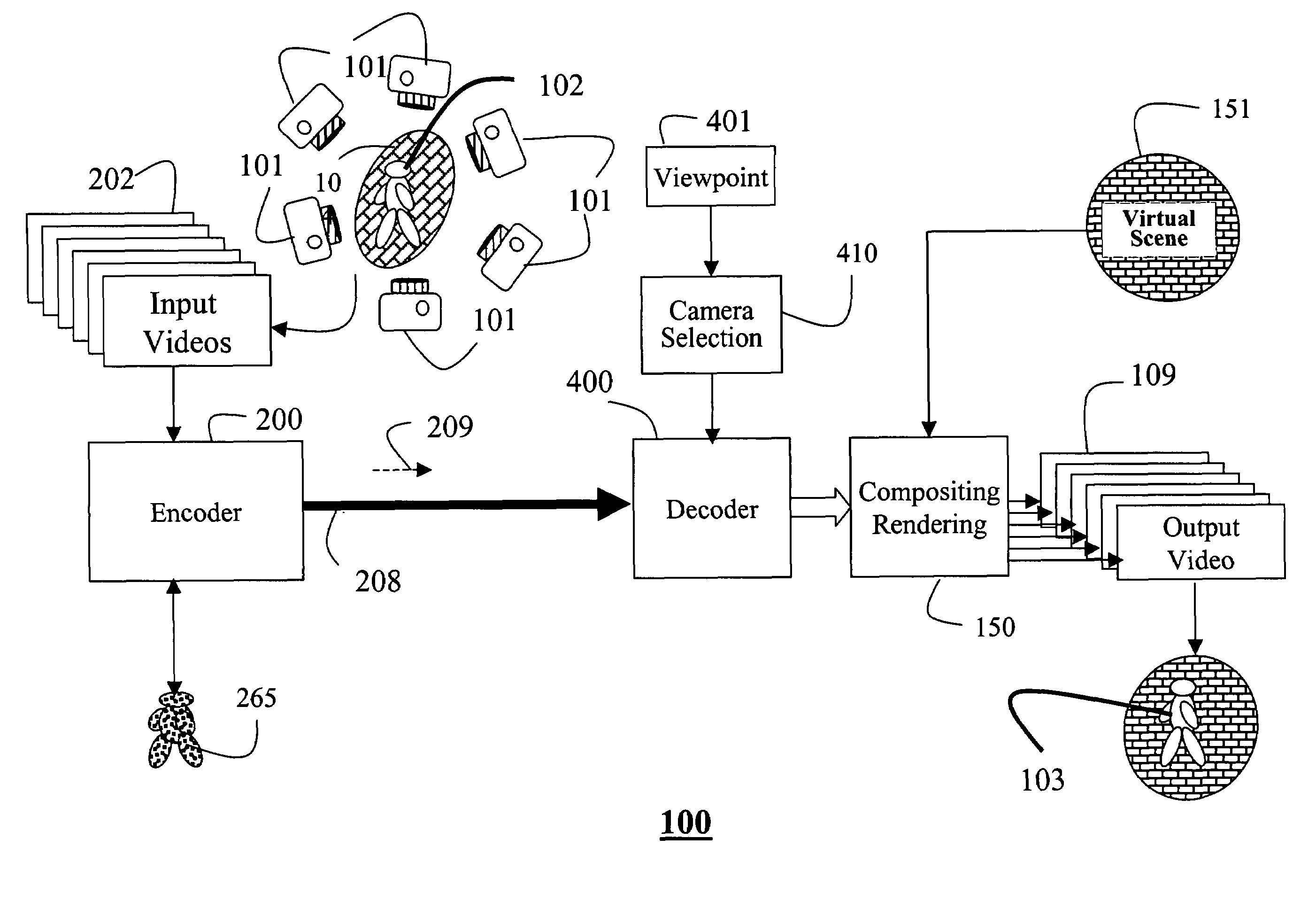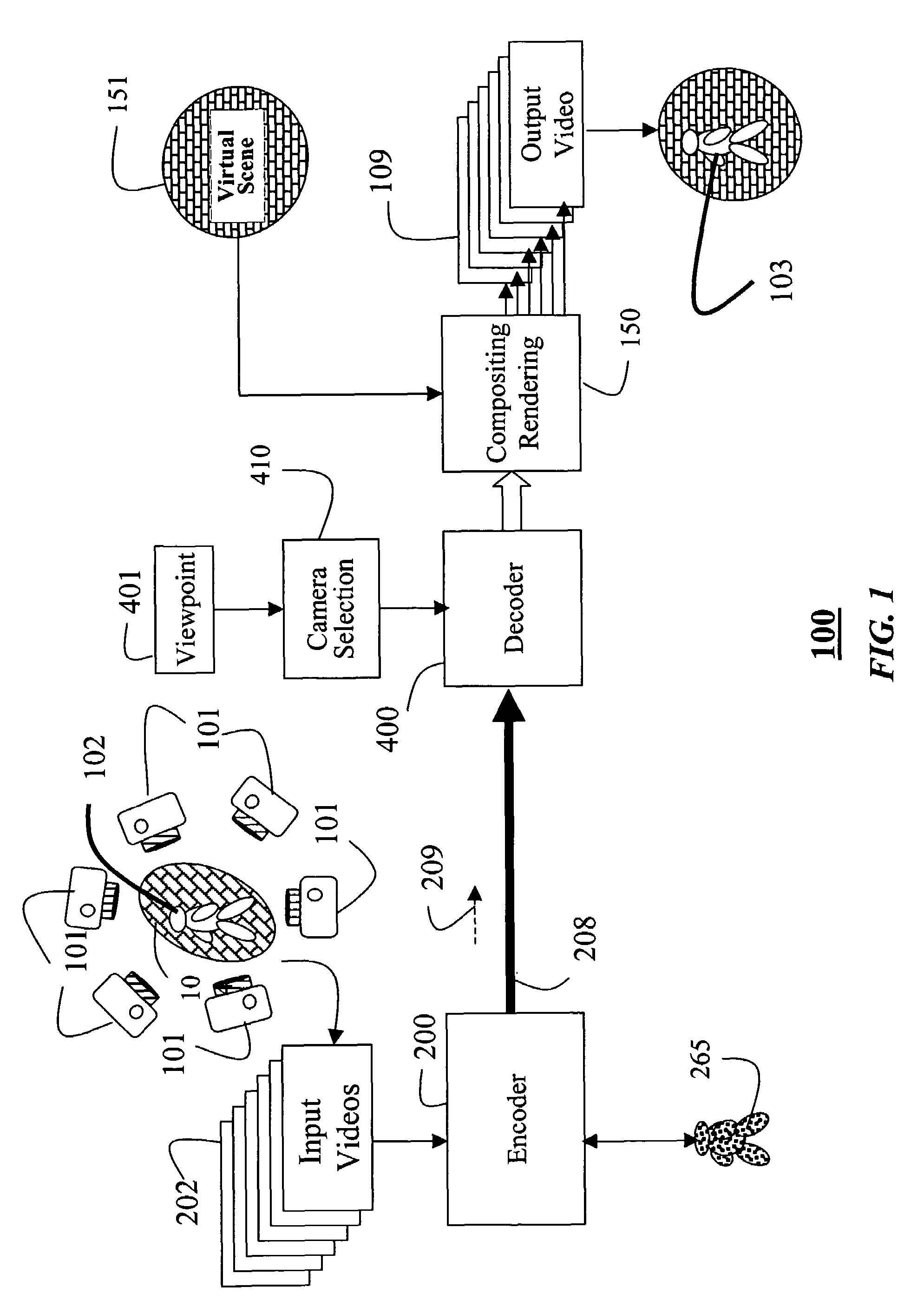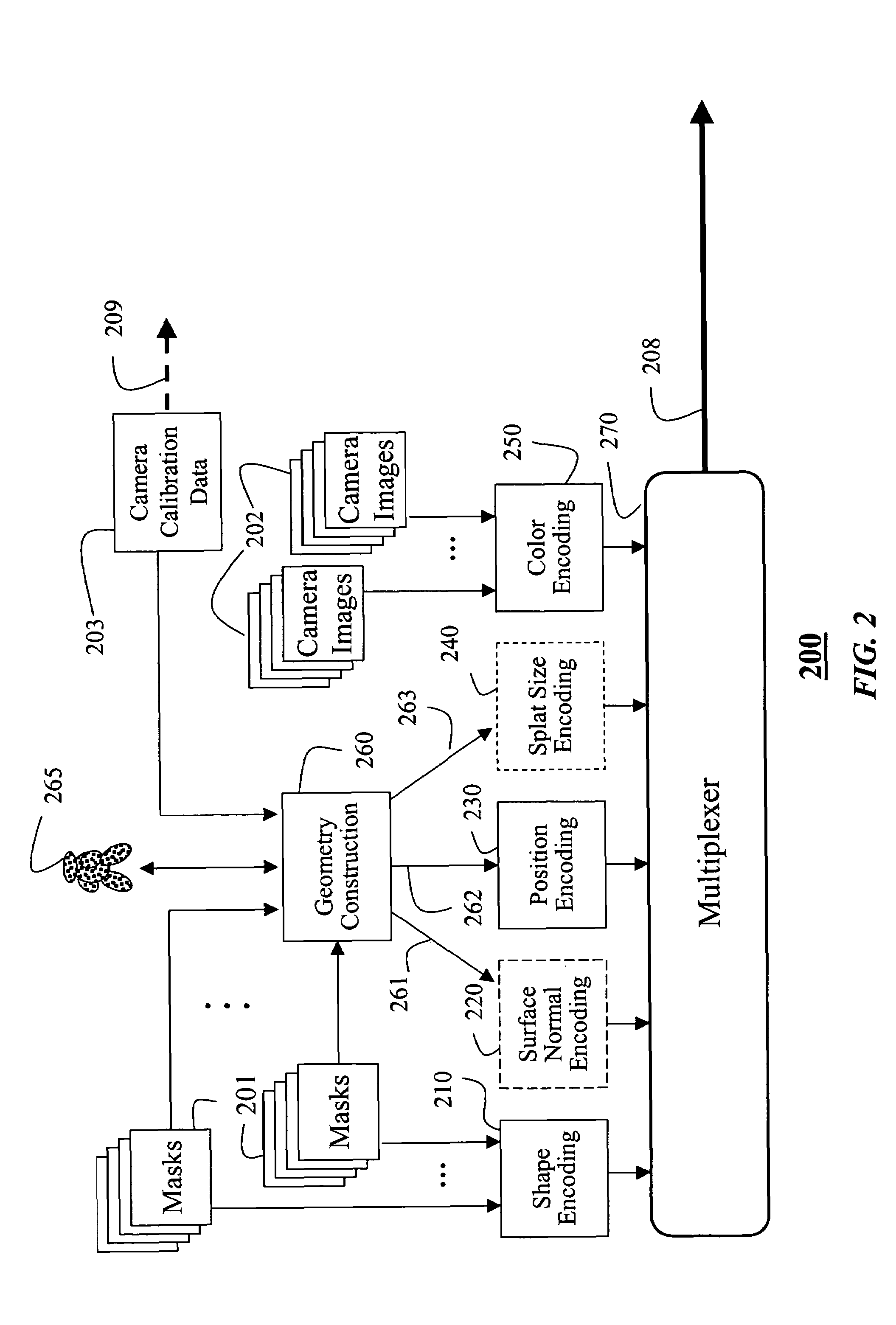Method for encoding and decoding free viewpoint videos
a free viewpoint and video technology, applied in the field of video processing, can solve the problems of encoding the 3d video bitstream, extracting and reconstructing the real moving 3d objects, and posing a major technical challenge in 3d video processing
- Summary
- Abstract
- Description
- Claims
- Application Information
AI Technical Summary
Benefits of technology
Problems solved by technology
Method used
Image
Examples
Embodiment Construction
[0034]System Structure
[0035]FIG. 1 shows the general structure 100 of a system and method for encoding 200 input videos 202 and decoding 400 to output videos 109 according to our invention. Embodiment for encoding constrained and unconstrained free viewpoint videos are shown in greater detail in FIGS. 2 and 5. Constrained and unconstrained free viewpoint videos according to the invention are described in greater detail below.
[0036]As an advantage of our invention, the acquiring can be performed at a local encoding node, and the decoding at a remote decoding node. The encoding 200 can be performed as an off-line process and is not time-critical. However, the decoding 400 is done in real-time.
[0037]We used an encoded video bitstream 208. The bitstream 208 can be transferred from the encoder 200 to the decoder 400 using any conventional means, e.g., a file transfer, an intermediate storage media (DVD), a network channel, etc.
[0038]Before acquiring the videos 202, extrinsic and intrinsi...
PUM
 Login to View More
Login to View More Abstract
Description
Claims
Application Information
 Login to View More
Login to View More - R&D
- Intellectual Property
- Life Sciences
- Materials
- Tech Scout
- Unparalleled Data Quality
- Higher Quality Content
- 60% Fewer Hallucinations
Browse by: Latest US Patents, China's latest patents, Technical Efficacy Thesaurus, Application Domain, Technology Topic, Popular Technical Reports.
© 2025 PatSnap. All rights reserved.Legal|Privacy policy|Modern Slavery Act Transparency Statement|Sitemap|About US| Contact US: help@patsnap.com



